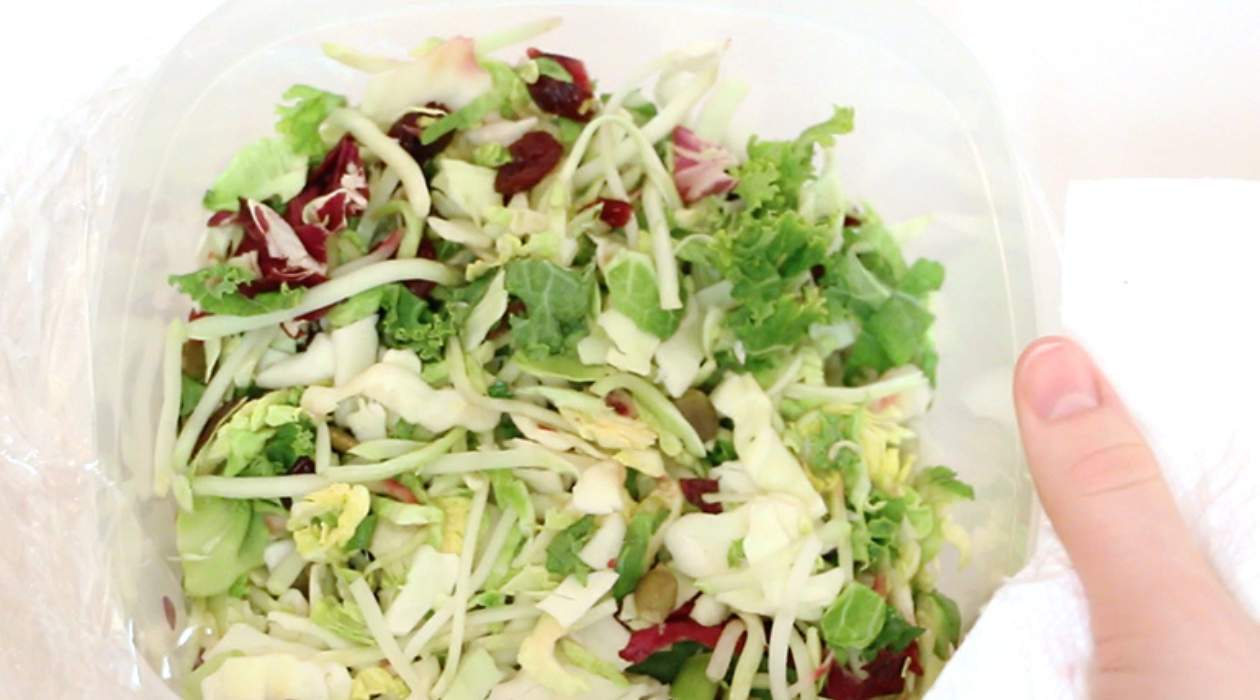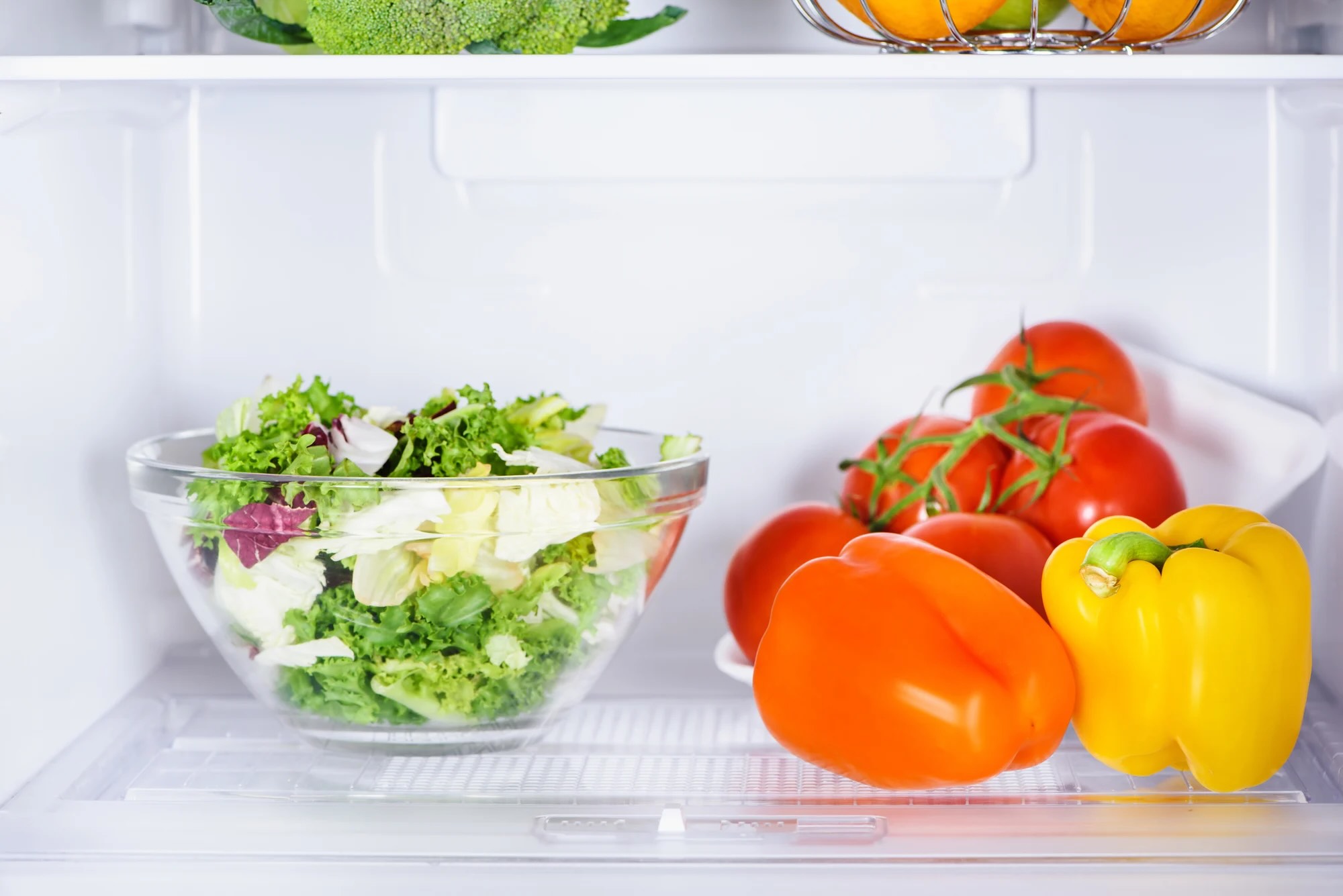

Articles
How To Store Egg Salad
Modified: February 27, 2024
Learn the best way to store egg salad to keep it fresh and tasty for longer. Follow these simple articles for expert tips and tricks.
(Many of the links in this article redirect to a specific reviewed product. Your purchase of these products through affiliate links helps to generate commission for Storables.com, at no extra cost. Learn more)
Introduction
Egg salad is a classic dish that is loved by many for its creamy texture and savory flavors. Whether you enjoy it as a sandwich filling, a topping for salads, or a delicious snack on its own, proper storage is crucial to maintain its freshness and quality. By following the right techniques, you can ensure that your egg salad stays safe to eat and retains its taste for longer periods of time.
In this article, we will explore the importance of proper storage for egg salad and provide you with tips and methods for storing it effectively. Whether you’re planning to refrigerate or freeze your egg salad, we have you covered with step-by-step instructions and helpful suggestions to preserve its deliciousness. So let’s dive in and discover the best ways to store egg salad!
Key Takeaways:
- Proper storage of egg salad is crucial for maintaining freshness, preventing bacterial growth, and minimizing food waste. Follow recommended guidelines to enjoy this classic dish safely and deliciously.
- Whether refrigerating or freezing egg salad, use fresh ingredients, label and date containers, and consume within recommended timeframes. Get creative with storage and enjoy egg salad with peace of mind.
Read more: How Long Is Egg Salad Good In Refrigerator
Why Proper Storage is Important for Egg Salad
Proper storage of egg salad is essential to maintain its freshness, prevent bacterial growth, and ensure food safety. As eggs are a perishable food item and may carry the risk of Salmonella contamination, it is crucial to handle and store egg salad correctly to prevent foodborne illnesses.
Here are a few key reasons why proper storage is important for egg salad:
- Food Safety: Egg salad contains mayonnaise, which is an ingredient susceptible to bacterial growth when left at room temperature. Bacteria, such as Salmonella, thrive in warm conditions and can multiply rapidly in mayo-based salads. Improper storage of egg salad can lead to food poisoning if consumed after bacteria have had the opportunity to grow.
- Freshness and Quality: By storing egg salad properly, you can preserve its freshness and quality for a longer period. Constant exposure to air and fluctuating temperatures can cause the salad to spoil more quickly, leading to undesirable changes in taste, texture, and color.
- Minimizing Waste: If egg salad is not stored properly, it may spoil sooner and become unfit for consumption. This can result in unnecessary food waste, along with the time and effort invested in preparing the salad. Proper storage can help extend the shelf life of egg salad, reducing wastage and saving money.
Overall, the proper storage of egg salad is vital to ensure food safety, maintain freshness, and minimize waste. By following the recommended storage guidelines, you can enjoy your egg salad for longer without compromising on taste or risking your health.
Tips for Storing Egg Salad
When it comes to storing egg salad, there are several tips and techniques you can follow to keep it fresh and safe to consume. By following these guidelines, you can extend the shelf life of your egg salad and maintain its delicious taste. Here are some helpful tips for storing egg salad:
- Use Fresh Ingredients: Start with fresh and high-quality ingredients when making your egg salad. This includes using fresh eggs, mayonnaise, and other add-ins. Using fresh ingredients will ensure better taste and longevity.
- Properly Cook the Eggs: Make sure the eggs are cooked thoroughly before incorporating them into your salad. Undercooked eggs can pose a risk for salmonella. It is recommended to fully cook the eggs by boiling them for around 10-12 minutes.
- Cool the Eggs: Once the eggs are cooked, allow them to cool completely before making the egg salad. Cooling the eggs will prevent the salad from turning watery and help maintain its creamy texture.
- Chill the Ingredients: Before mixing the ingredients together, refrigerate the mayo and other perishable additions. Cold ingredients will help keep the salad fresh and prevent bacterial growth.
- Store in an Airtight Container: Transfer the egg salad to an airtight container to protect it from air exposure. This will help prevent the salad from drying out and maintain its flavors. A glass or plastic container with a tight-fitting lid works well for this purpose.
- Label and Date: It’s a good practice to label the container with the date of preparation. This will help you keep track of the salad’s freshness and avoid consuming it past its optimal shelf life.
- Keep Refrigerated: To maintain the freshness and safety of egg salad, always store it in the refrigerator. The cold temperature will slow down bacterial growth and keep the salad safe to consume.
- Consume within the Recommended Timeframe: Egg salad is best consumed within 3-5 days of preparation when stored in the refrigerator. After this time, the quality may deteriorate, and there is an increased risk of bacterial growth.
By following these tips, you can ensure that your egg salad stays fresh and delicious for as long as possible. Proper storage techniques will help maintain the quality of your salad and minimize the risk of foodborne illnesses.
Option 1: Refrigerating Egg Salad
Refrigeration is an effective method for storing egg salad, as it helps maintain its freshness and prevents bacterial growth. Here’s how you can refrigerate your egg salad:
- Transfer to an Airtight Container: Once you have prepared the egg salad, transfer it to a clean and dry airtight container. Ensure that the container is appropriately sized to accommodate the salad without leaving much empty space. This will help minimize air exposure, which can lead to moisture loss and spoilage.
- Seal the Container: Securely seal the container with its lid to create a tight seal. Make sure there are no gaps or openings that could allow air to enter or escape.
- Place in the Refrigerator: Move the sealed container to the refrigerator immediately after preparing the egg salad. Position it on a shelf where it can stay undisturbed and maintain a consistent temperature.
- Avoid the Refrigerator Door: While it may be tempting to store the egg salad in the refrigerator door for easy access, it is not the best place for it. The door tends to experience temperature fluctuations more frequently, leading to the loss of freshness and potential bacterial growth.
- Keep Away from Strong Odors: Avoid storing the egg salad near pungent or strong-smelling foods. The salad can absorb these odors, altering its taste and aroma.
- Consume within the Recommended Timeframe: It is generally recommended to consume refrigerated egg salad within 3-5 days. After this period, bacteria can multiply, and the salad may lose its quality.
- Inspect for Freshness: Before consuming refrigerated egg salad, inspect it for any signs of spoilage such as mold, an off smell, or a change in texture or color. If any of these indicators are present, discard the salad immediately.
By refrigerating your egg salad using these steps, you can extend its shelf life and enjoy it safely for several days. Remember to follow proper storage guidelines and consume the salad within the recommended timeframe to ensure food safety and quality.
Store egg salad in an airtight container in the refrigerator for up to 3-5 days. Keep it away from strong-smelling foods to prevent absorption of odors.
Option 2: Freezing Egg Salad
If you want to store egg salad for an extended period, freezing can be a convenient option. Although freezing may alter the texture slightly, it allows you to keep your egg salad for several weeks. Here’s how you can freeze egg salad:
- Prepare and Chill: Start by preparing your egg salad according to your preferred recipe. Once prepared, allow the salad to cool completely in the refrigerator before freezing. This step is important to prevent excessive condensation and maintain the salad’s texture.
- Portion the Salad: Divide the egg salad into individual portions based on your desired serving size. This will make it easier to thaw and use only the required amount without thawing the entire batch.
- Use a Freezer-Safe Container: Transfer each portion of egg salad into airtight and freezer-safe containers. Alternatively, you can use freezer bags, squeezing out as much air as possible before sealing them tightly.
- Label and Date: Label each container or freezer bag with the date of freezing. This will help you keep track of its freshness and ensure you use the oldest batch first.
- Freeze: Place the labeled containers or freezer bags in the freezer, making sure they are placed on a flat surface to prevent any spillage or leakage. It is recommended to store egg salad in the deepest part of the freezer where the temperature is most consistent.
- Thawing and Usage: When you’re ready to use the frozen egg salad, transfer a portion from the freezer to the refrigerator. Allow it to thaw slowly overnight or for a few hours. Thawing in the refrigerator helps maintain the salad’s texture and minimizes the risk of bacterial growth. Avoid refreezing previously frozen egg salad.
- Inspect for Freshness: Before consuming thawed egg salad, inspect it for any signs of spoilage, such as an off smell, strange texture, or discoloration. If you notice any of these signs, discard the salad immediately.
Freezing egg salad can be a suitable option when you want to preserve it for an extended period. Keep in mind that the texture may be slightly different after thawing, so it is often best used in dishes like wraps, sandwiches, or as a base for other recipes, rather than consuming it on its own.
By following these steps, you can safely freeze egg salad and have it on hand whenever you need it. Just remember to thaw and use it within a reasonable timeframe to maintain its quality and flavor.
Read more: How To Store Salad
How to Thaw Frozen Egg Salad
Thawing frozen egg salad properly is crucial to maintain its taste, texture, and safety. Here are the steps you can follow to thaw frozen egg salad:
- Transfer to Refrigerator: Take the frozen container or freezer bag of egg salad out of the freezer and place it in the refrigerator. This slow thawing method allows the salad to defrost gradually, preserving its texture and reducing the risk of bacterial growth.
- Allow Ample Time to Thaw: Give the egg salad enough time to thaw completely in the refrigerator. Depending on the portion size and the temperature of your refrigerator, this process can take anywhere from a few hours to overnight.
- Do Not Rush with Heat: Avoid using heat or hot water to thaw egg salad, as it can change the texture and potentially compromise its safety. Slow thawing in the refrigerator is the safest and most effective method.
- Stir Gently: Once the egg salad has thawed, gently stir it to redistribute any separation or moisture that may have occurred during the freezing and thawing process. This will help restore its consistency.
- Inspect for Freshness: Examine the thawed egg salad for any signs of spoilage, such as a strange smell, unusual texture, or discoloration. If you notice any of these indicators, it is best to discard the salad to avoid the risk of foodborne illnesses.
- Consume or Use Promptly: Thawed egg salad has a limited shelf life and should be used within 2-3 days after thawing. Make sure to consume it or incorporate it into your recipes promptly to make the most of its flavors and quality.
Thawing frozen egg salad in the refrigerator ensures that it remains safe to eat while maintaining its taste and texture. Following these steps will help you properly thaw your frozen egg salad and enjoy it without compromising its quality.
Other Considerations for Storing Egg Salad
While refrigerating or freezing egg salad are the primary methods for storage, there are a few additional considerations to keep in mind to ensure optimal freshness and safety. Here are some other factors to consider when storing egg salad:
- Transportation: If you plan to take egg salad with you on a picnic, outing, or to work, it’s important to keep it cold during transportation. Use an insulated cooler bag with ice packs or freeze water bottles to act as ice packs. This will help maintain the desired temperature and prevent bacterial growth.
- Single-serving Portions: Consider dividing your egg salad into smaller, single-serving portions before storing. This allows you to thaw only what you need, minimizing waste and reducing the risk of contamination from repeatedly thawing and refreezing.
- Storage Duration: For optimal taste and quality, it is recommended to consume refrigerated egg salad within 3-5 days. Frozen egg salad can be stored for up to 1-2 months. However, the longer egg salad is stored, the more it will tend to lose its desirable texture and flavor.
- Quality Assessment: Before consuming stored egg salad, it’s essential to assess its quality. Look for any signs of spoilage, such as an off smell, sliminess, or discoloration. Trust your senses and if anything seems out of the ordinary, it’s best to discard the salad.
- Variety of Uses: Get creative with your stored egg salad! Instead of just using it as a sandwich filler, consider incorporating it into recipes like wraps, salads, or even as a topping for baked potatoes. This will add versatility and freshness to your meals.
- Don’t Mix with Fresh Ingredients: It’s important to note that once egg salad has been stored, it should not be mixed with fresh ingredients. Mixing fresh ingredients with stored egg salad can introduce contaminants and increase the risk of bacterial growth.
- Safety First: When in doubt about the freshness or safety of the egg salad, it’s best to err on the side of caution and discard it. It’s always better to be safe than sorry when it comes to foodborne illnesses.
By considering these factors when storing egg salad, you can ensure its safety, quality, and enjoy it to the fullest. Proper storage techniques and careful attention to freshness will help you savor this delicious dish with peace of mind.
Conclusion
Proper storage is essential for maintaining the freshness, taste, and safety of egg salad. Whether you choose to refrigerate or freeze your egg salad, following the correct techniques will ensure that you can enjoy it for an extended period without compromising on quality.
Refrigerating egg salad requires transferring it to an airtight container, keeping it in the refrigerator, and consuming it within 3-5 days for optimal taste and safety. On the other hand, freezing egg salad involves portioning it, storing in freezer-safe containers or bags, and thawing it slowly in the refrigerator when you are ready to use it. Freezing allows you to store egg salad for longer periods, but it may alter the texture slightly.
Remember to always use fresh ingredients, cook eggs thoroughly, cool them before making the salad, and refrigerate or freeze promptly to avoid bacterial growth. Additionally, label and date your stored egg salad to keep track of its shelf life.
Whether you enjoy egg salad as a sandwich filling, a topping for salads, or a nutritious snack, proper storage techniques ensure that you can savor it with confidence. Always inspect the salad for any signs of spoilage before consuming and discard it if it appears unsafe.
By following the tips and guidelines outlined in this article, you can store your egg salad effectively, minimize food waste, and enjoy this delightful dish at its best. So go ahead, prepare a delicious batch of egg salad, and store it correctly to relish its creamy goodness in the days to come!
Frequently Asked Questions about How To Store Egg Salad
Was this page helpful?
At Storables.com, we guarantee accurate and reliable information. Our content, validated by Expert Board Contributors, is crafted following stringent Editorial Policies. We're committed to providing you with well-researched, expert-backed insights for all your informational needs.















0 thoughts on “How To Store Egg Salad”